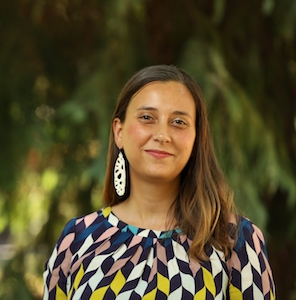Past Events
Interested in Cotsen events? Sign up for our mailing list.Speaker: 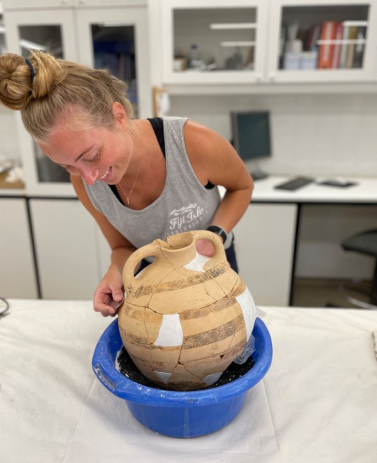
Celine Wachsmuth
M.A. Student
UCLA/Getty Conservation of Archaeological and Ethnographic Materials MA
Abstract: One of the requirements for the MA Conservation degree is a nine month (minimum) internship in one or more conservation labs. By the end of my internship year, I will have worked in three different places; the Institute for Aegean Prehistory Study Center for East Crete (INSTAP), the AfricaMuseum, and the Denver Art Museum (and a very exciting one month at the Denver Museum of Nature and Science). In this talk I will give a brief description of the different things I've been up to since starting my third year. This summer I spent six weeks in Crete working on archaeological ceramic, metal, and glass objects from various sites around East Crete. After a break in August to travel and see family, I started my second internship in Belgium. Here I've shifted gears and been heavily involved in the installation process for a contemporary exhibition and treating a wood object going out on a loan.
Bio: Céline is a third year student in the UCLA/Getty MA program in conservation. She has had the chance to work in many great conservation labs including at the Penn Museum, the Cleveland Museum of Art, a private objects lab in Seattle, a private automaton and horological lab in Seattle, the Anchorage Museum, Fowler Museum, INSTAP, and now the AfricaMuseum.
Contact Sumiji Takahashi
Email sutakahashi@ioa.ucla.edu
Phone 310-825-4169
Speaker: 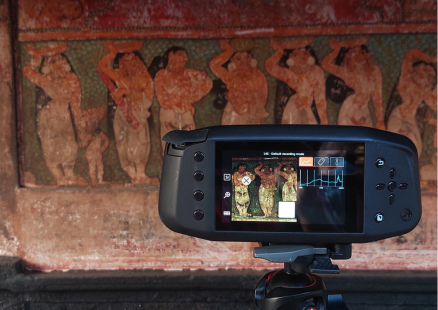
Moupi Mukhopadhyay
Ph.D. Student
UCLA Conservation of Material Culture IDP
Abstract: The wall paintings in the Indian state of Kerala belonging to the Kerala mural tradition (7th - 17th century CE) provide important cross-cultural links that contextualize local historical religious practices, trade, and social interactions. The complex color scheme of the paintings is traditionally attributed to the skillful use of only five colors (panchavarna) – black, red, yellow, green and white. However, the available literature on the technical study of the murals does not consistently assign the same material (coloring agent or pigment) to the composition of a single color. For example, while black is generally accepted as lamp black across different publications, the green has been ascribed to green earth, powdered leaves, or combinations of yellow ochre, gamboge, indigo, and even lapis lazuli. Understanding the materials used in specific temple murals, and their possible sources, can help better understand the nature and movements of the agents involved in the creation of these paintings. Advances in material characterization methods have significantly increased the scope of identifying the composition of the colors in murals non-invasively, ideal for the preliminary research required to build a case for a more intensive technical study. Non-invasive fieldwork was conducted on selected temples in Kerala, using a digital single-lens reflex camera (DSLR) for photography as well as Infrared (IR) imaging, and a SPECIM IQ hyperspectral camera for hyperspectral imaging (HSI). Permissions to access the temples allowed for the use of only sunlight as the illumination source, adding to the complexity of the interpretation of the data obtained. The use of Infrared False Color Imaging (IRFC) in conjunction with the analysis of HSI data reveals photophysical characteristics of the pigments which are useful for their identification, and for determining optimal characterization methods for further scientific investigation.
Bio: Moupi Mukhopadhyay is a PhD Candidate in the Conservation of Material Culture Program IDP at UCLA. She is interested in investigating the photophysical and chemical properties of pigments in cultural heritage materials using scientific techniques, to better inform their conservation. Through her research, she aims to develop a better understanding of the materials and technology of the creation of temple wall paintings in Kerala, India.
Contact Sumiji Takahashi
Email sutakahashi@ioa.ucla.edu
Phone 310-825-4169
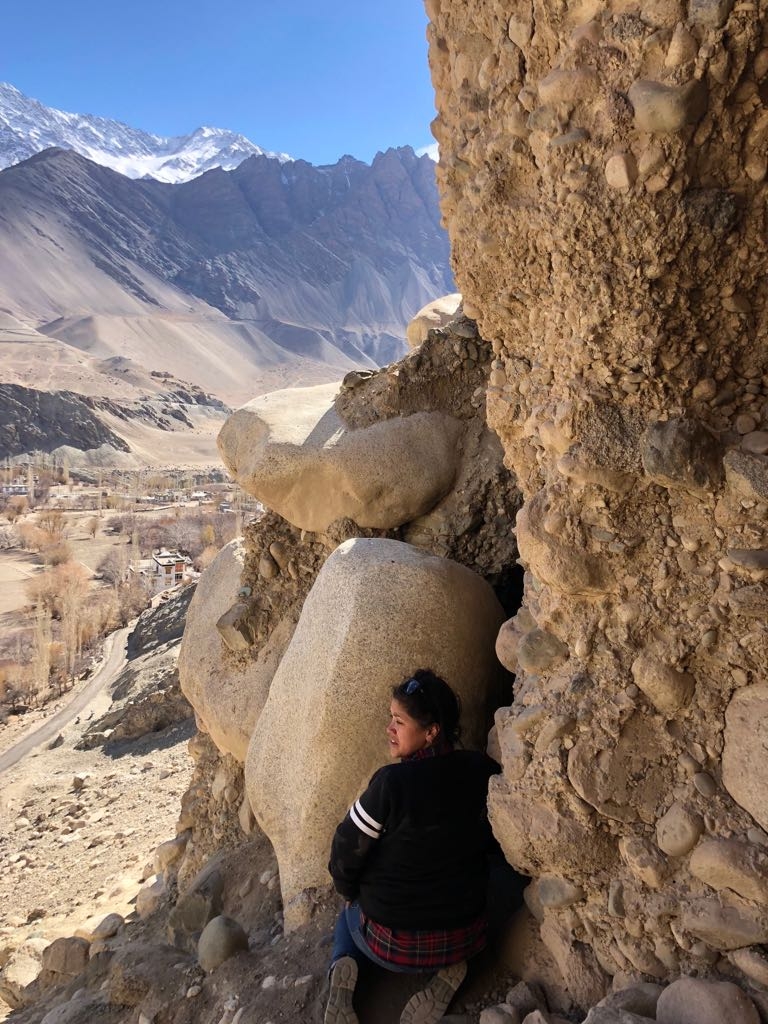 Ayesha Fuentes
Ayesha Fuentes
Stride Lecturer in Arts Conservation
Northumbria University
Ayesha Fuentes will discuss Tibetan and Himalayan religious use of ritual objects made with human skulls and femurs. Fuentes incorporates conservation methods, documentation, and interpretation of the material knowledge and techniques used to select, prepare, activate, maintain and exchange these objects. This project combines the technical examination of objects in museum collections with interviews and observations made across the Himalayan region and investigations of historical sources and cultural narratives. Her research highlights the longevity, function and value of these ritual instruments within diverse communities.
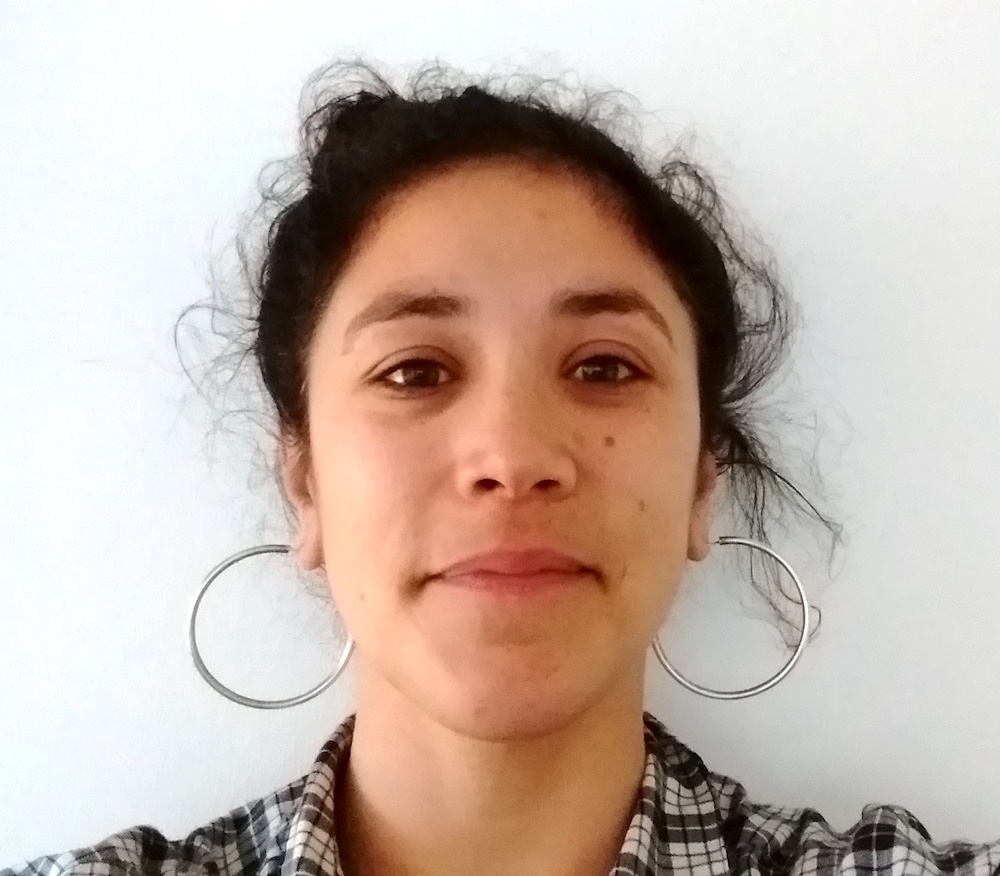 Ayesha Fuentes, Stride Lecturer in Arts Conservation at Northumbria University, is an objects conservator and technical art historian specializing in Asian material heritage. She is a graduate of the UCLA/Getty MA program in Conservation of Ethnographic Materials (2014) and a former employee at the Fowler Museum at UCLA. She recently submitted her doctoral dissertation on the use of human remains in Tibetan ritual objects at School of Oriental and African Studies (SOAS), University of London, where she was a Neil Kreitman and Overseas Research Scholar.
Ayesha Fuentes, Stride Lecturer in Arts Conservation at Northumbria University, is an objects conservator and technical art historian specializing in Asian material heritage. She is a graduate of the UCLA/Getty MA program in Conservation of Ethnographic Materials (2014) and a former employee at the Fowler Museum at UCLA. She recently submitted her doctoral dissertation on the use of human remains in Tibetan ritual objects at School of Oriental and African Studies (SOAS), University of London, where she was a Neil Kreitman and Overseas Research Scholar.
Contact Michelle Jacobson
Email mjacobson@ioa.ucla.edu
Phone
Jerry Moore
Department of Anthropology
California State University Dominguez Hills
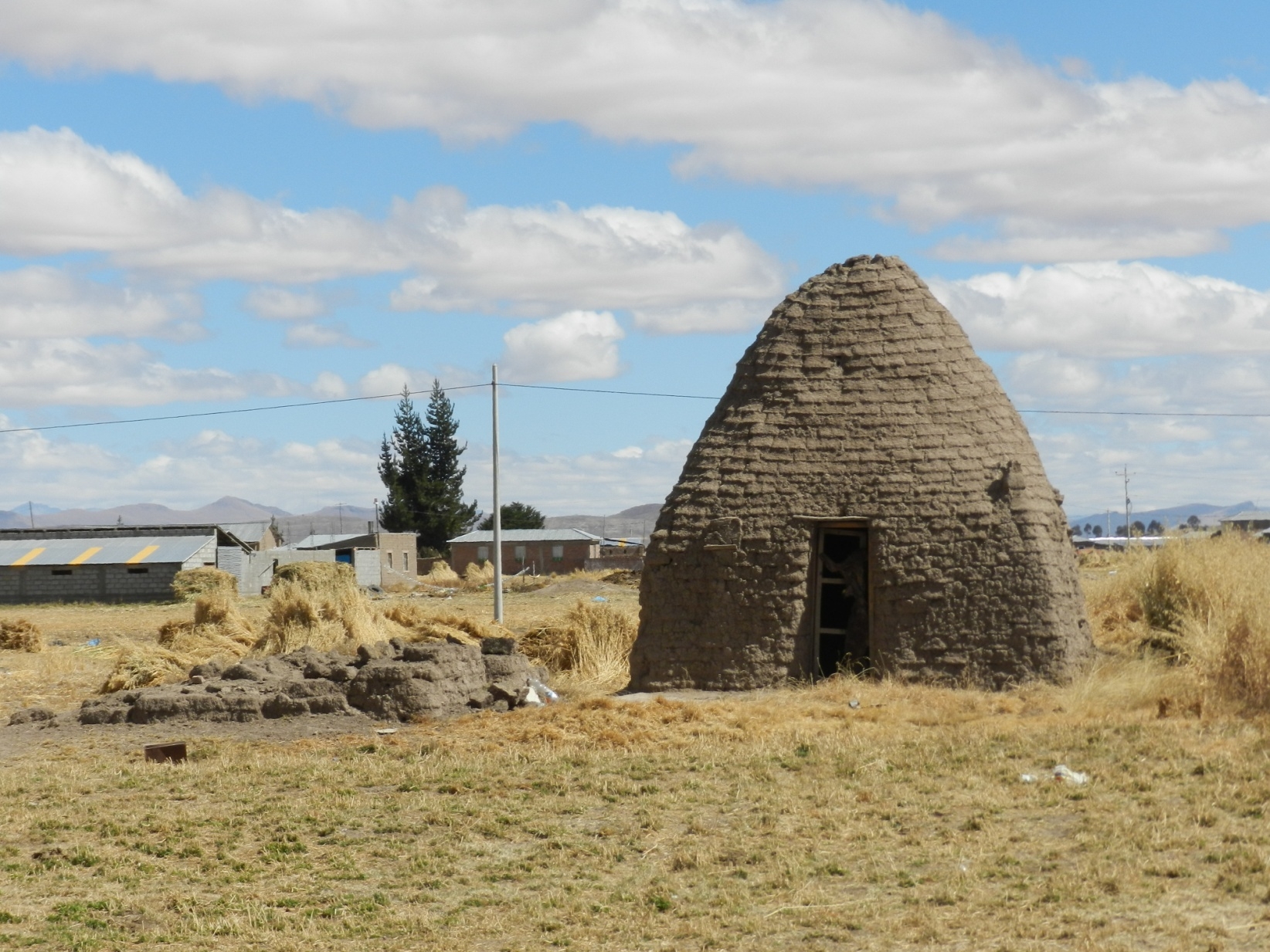
Moore's principal expertise is on the prehistoric architecture and cultural landscapes in the Andes. Archaeologists typically view architectural features of dwellings and other domestic architecture as built projects in which materials are modified according to a preconceived design in the builders’ minds. Although archaeologists usually acknowledge the different processes that transform buildings into archaeological features and sites, they tend not to understand how different buildings and construction methods inherently shape the archaeological record. This has direct implications for archaeological inferences about ancient households. Dr. Moore will discuss these issues referencing select case studies from Mesoamerica and the Andes.
Contact Michelle Jacobson
Email mjacobson@ioa.ucla.edu
Phone
Helina Woldekiros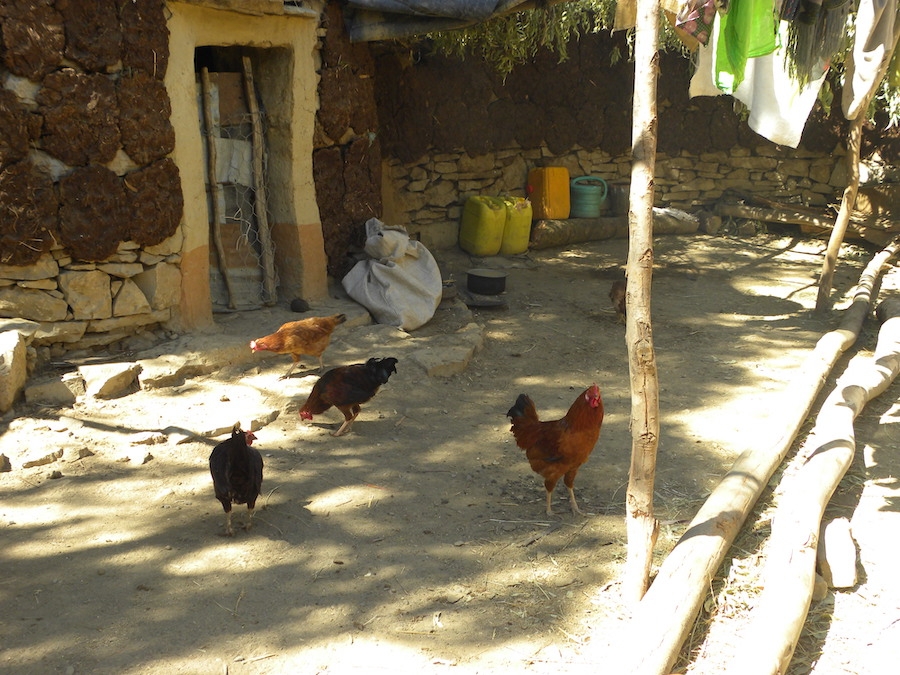
Assistant Professor, Department of Anthropology
Washington University
Domestic chickens (Gallus gallus domesticus L. 1758) are one of the most valued farm animals in the world today. Chickens are economically and socially significant in Africa. They are often associated with cuisine and identity as well as their ability to generate income for poor rural communities. Despite their importance, little is known about the nature of their introduction and subsequent integration into African economies. In this paper I present archaeological and biometric perspective on the introduction and development of chicken landraces in the Horn of Africa.
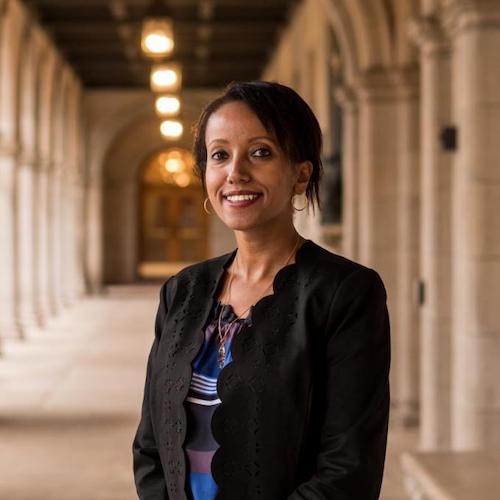 Dr. Helina Woldekiros is an assistant professor at the Department of Anthropology at Washington University in St. Louis. Woldekiros completed her Ph.D. at Washington University in St. Louis and her MA at the University of Florida. After completing a postdoctoral research at Ludwig Maximilian University in Munich, Germany, Woldekiros joined the Department of Anthropology at WU in 2015.Woldekiros's research interest includes state formation, the origin of food production, agriculture, pastoralism, salt trade, caravan archaeology, and livestock biodiversity in the Horn of Africa. Her upcoming book entitled "The Boundaries of Ancient Trade" re-conceptualizes state formation in the Horn Africa by looking at not only hierarchical political models but also heterarchical political models. She is also an expert in the domestication and spread of chickens globally.
Dr. Helina Woldekiros is an assistant professor at the Department of Anthropology at Washington University in St. Louis. Woldekiros completed her Ph.D. at Washington University in St. Louis and her MA at the University of Florida. After completing a postdoctoral research at Ludwig Maximilian University in Munich, Germany, Woldekiros joined the Department of Anthropology at WU in 2015.Woldekiros's research interest includes state formation, the origin of food production, agriculture, pastoralism, salt trade, caravan archaeology, and livestock biodiversity in the Horn of Africa. Her upcoming book entitled "The Boundaries of Ancient Trade" re-conceptualizes state formation in the Horn Africa by looking at not only hierarchical political models but also heterarchical political models. She is also an expert in the domestication and spread of chickens globally.
Contact Michelle Jacobson
Email mjacobson@ioa.ucla.edu
Phone
Bryan Kraemer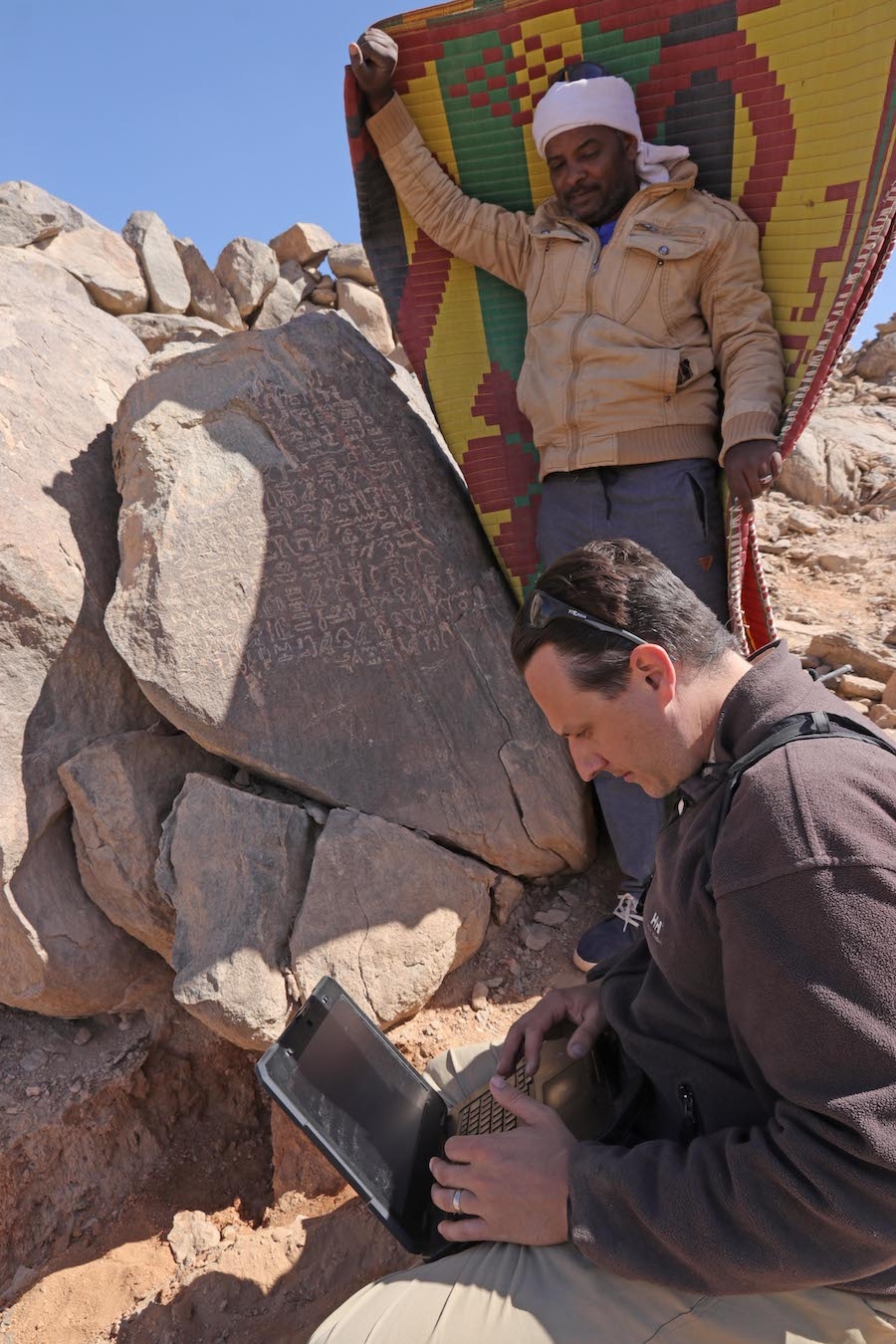
Egyptologist at the Robert and Frances Fullerton Museum of Art
California State University, San Bernardino
Since 2014, the Wadi el-Hudi Expedition has been surveying archaeological sites in Egypt’s Eastern Desert connected with ancient amethyst and gold mines. The ancient activity was concentrated in two periods, Egypt’s Middle Kingdom (circa 2000 -1700 BCE), and the Early Roman Period (late 1st century BCE to 2nd century CE). During the first period, the ancient miners, guardians, and administrators left an abundant epigraphic record of their activities. To date, 270 separate inscriptions have been recorded at Wadi el-Hudi. These show a wide range of formality in inscriptional technique between carefully crafted monumental stelae with long hieroglyphic texts on one hand to rock-pecked petroglyphs on the other. Partially published by Ahmed Fakhry in 1952 and Ahmed Sadek in 1980-85, the inscriptions of Wadi el-Hudi have contributed significantly to our understanding of how ancient Egyptian desert mining expeditions operated. The Wadi el-Hudi Expedition has now for the first time recorded these inscriptions within their archaeological context using a photogrammetry-based epigraphic methodology. This record is fully integrated into the 3-dimensional survey of the entire Wadi el-Hudi topography and archaeological remains. It therefore allows us not only to record but also to present the inscriptions in a digital reproduction of their original context. This detailed 3D record is especially important since modern gold mining threatens the existence of archaeological sites in this remote area of the desert.
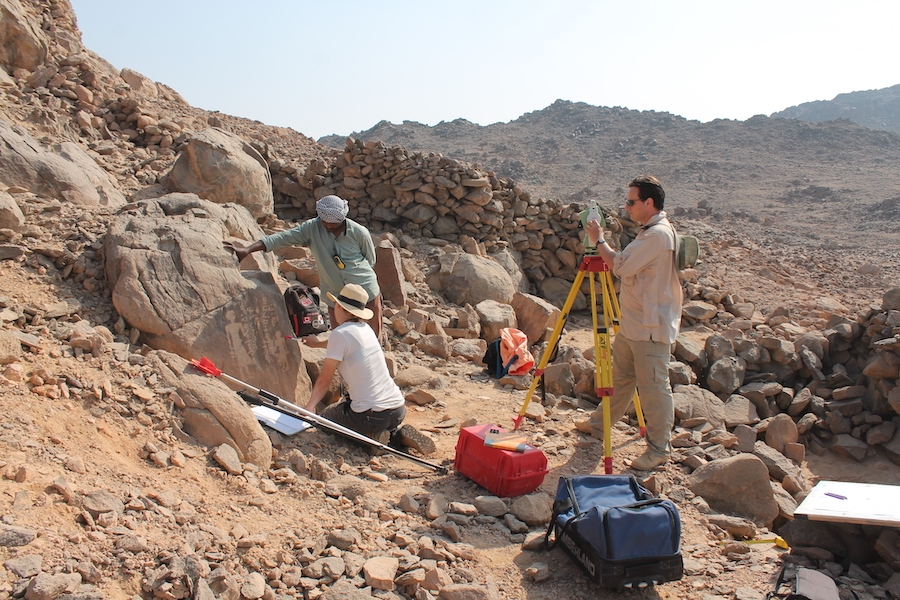
In this talk, I will present a selection of the current results of the Wadi el-Hudi Expedition’s epigraphic and archaeological survey. Taking from interpretive theories of Geosemiotics, I will present case studies from the results of the epigraphic working understanding how the inscriptions at Wadi el-Hudi were embedded in a nexus of social and linguistic actions that contributed to their meaning and defined the local versions of what one might call an epigraphic habit. Additionally, I will outline how we have incorporated 3D capture into every aspect of recording at Wadi el-Hudi and show the results and challenges of using this methodology.
The Wadi el-Hudi Expedition works under the auspices of California State University, San Bernardino and in compliance with the Ministry of Antiquities in Egypt. The expedition has conducted fiveseasons since 2014from which Iwill draw these results.
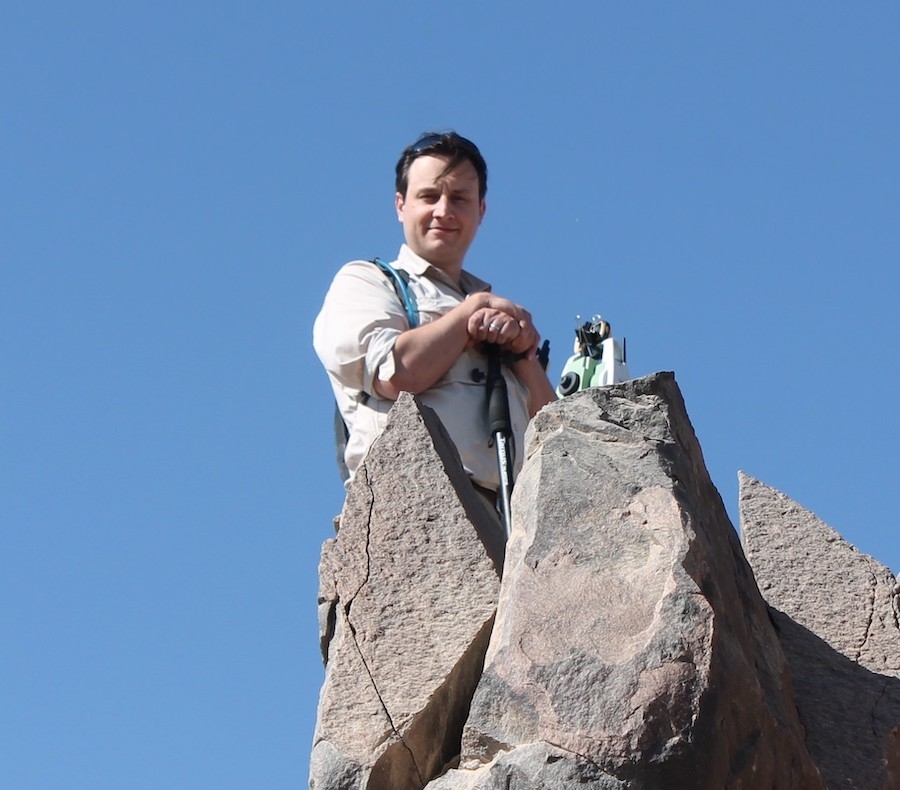 Bryan Kraemer is an Egyptologist at the Robert and Frances Fullerton Museum of Art (California State University, San Bernardino -CSUSB),where he is in charge of developing content related to the museum’s collections of artifact’s from Ancient Egypt. He is also a lecturer in the History Department at CSUSB. Bryanhas a Masters in Egyptology from the University of Chicago and a Masters in Archaeological Computing from Southampton University. He is also working on finishing his Ph.D. in Egyptology at the University of Chicago. Bryan’s research interests are in Ancient Egyptian religion and ritual, Ancient Egypt and the Classical World, Ancient Egyptian language, art, and archaeology, digital humanities, GIS, and digital frontiers in museums. He has worked and studied in Egypt over the last twenty years and taught Ancient Egyptian language and archaeology at University of Chicago, Princeton University, and California State University, San Bernardino. Bryan is currently working on a monograph on his work with the festival of Osiris at Abydos and a 3D archaeological atlas of maps from his work as co-director of the Wadi el-Hudi Expedition (www.wadielhudi.com).
Bryan Kraemer is an Egyptologist at the Robert and Frances Fullerton Museum of Art (California State University, San Bernardino -CSUSB),where he is in charge of developing content related to the museum’s collections of artifact’s from Ancient Egypt. He is also a lecturer in the History Department at CSUSB. Bryanhas a Masters in Egyptology from the University of Chicago and a Masters in Archaeological Computing from Southampton University. He is also working on finishing his Ph.D. in Egyptology at the University of Chicago. Bryan’s research interests are in Ancient Egyptian religion and ritual, Ancient Egypt and the Classical World, Ancient Egyptian language, art, and archaeology, digital humanities, GIS, and digital frontiers in museums. He has worked and studied in Egypt over the last twenty years and taught Ancient Egyptian language and archaeology at University of Chicago, Princeton University, and California State University, San Bernardino. Bryan is currently working on a monograph on his work with the festival of Osiris at Abydos and a 3D archaeological atlas of maps from his work as co-director of the Wadi el-Hudi Expedition (www.wadielhudi.com).
Contact Michelle Jacobson
Email mjacobson@ioa.ucla.edu
Phone
David A. Scott
Distinguished Professor Emeritus
UCLA Department of Art History
Chinese Art presents especially challenging problems in terms of authenticity of monuments, sites, and artefacts of all kinds. Professor Emeritus David A. Scott will examine the conceptual framework of authenticity, a metonymy, where the vagaries of the word can be replaced with intangible authenticity, material authenticity and historic authenticity. Authenticity can also be regarded as contested, debated and performative, particularly in terms of its social and political signification. At the same time, it is important to remember that authentication is a necessary attribute of material authenticity. Scott examines how different conceptions of authenticity can be applied to a discussion of hanging scrolls on paper and silk, bronze artefacts, and monuments and sites. The works of the most famous Chinese artist, copyist and forger, Zhang Daquian, will be briefly discussed. The nature and extent of copies in Chinese art and how they are perceived or valorized is an important issue and one of philosophical interest. Philosophical debates concerning how instances of copies are regarded, and how the intention of the original artist impinges on the reception and appreciation of copies will be discussed.
Contact Michelle Jacobson
Email mjacobson@ioa.ucla.edu
Phone
Severin Fowles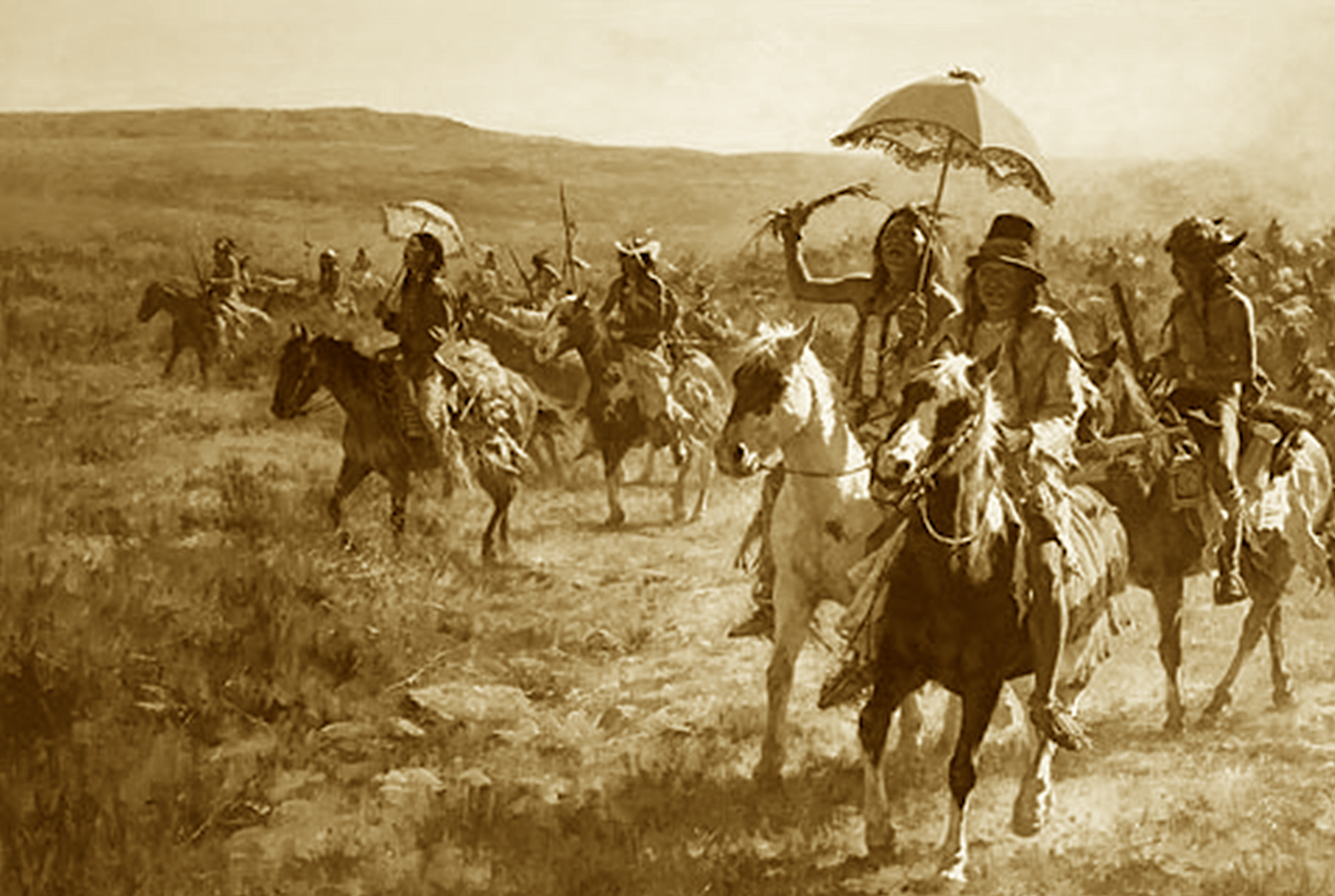
Associate Professor of Anthropology and Chair of the American Studies Department
Barnard College, Columbia University
The European invasion of the Americas unleashed a period of heightened global exchange as technologies, religions, political structures, foodways, languages, diseases, mineral resources, labor and more began to circulate with unprecedented velocity and scale. For the colonized, many of these cultural movements happened forcibly, at the tip of a spear, but there were also moments of Indigenous appropriation and creative reinvention of European traditions. This was particularly true with respect to image production and modes of graphic representation, as Indigenous communities sought out new visual cultures to assist them in understanding and intervening in colonial worlds. In this presentation, I consider what might be called the mestizo aesthetics that arose within colonial New Mexico following the arrival of Spanish settlers in 1598. Theoretically, my focus is on the power of images as technologies of action and intercession, no less than of representation. Historically, I pay special attention to image production among the Indigenous communities referred to by the Spanish as “barbarians”—groups like the Apache and Comanche who were themselves the fast-moving, intercultural choreographers of social life at the edge of empire.
Severin Fowles is an Associate Professor of Anthropology and Chair of the American Studies Department at Barnard College, Columbia University. For the past 25 years he has directed excavations and surveys in northern New Mexico, examining the history of Archaic hunter-gatherers through to the hippies of the 1960s. He is the author ofAn Archaeology of Doings: Secularism and the Study of Pueblo Religion(SAR) and co-editor of The Oxford Handbook of Southwest Archaeology(Oxford University Press). His current research has been designed in collaboration with Picuris Pueblo and is focused on the tribe's ancestral landscapes and farming practices.
Contact Michelle Jacobson
Email mjacobson@ioa.ucla.edu
Phone
Ashley Sharpe
Staff scientist and archaeologist
Smithsonian Tropical Research Institute in Panama
In recent years, multi-isotope analyses have become an increasingly popular method for examining the lives of past humans. Isotope studies can examine questions regarding the diets, health, and movements of people in the past. In combination with osteological, genetic, and archaeological data, we can begin to reconstruct the histories of both individuals and entire communities. This study presents results of an ongoing multi-isotope investigation of pre-Colombian humans in Panama, and compares these results with other isotope studies elsewhere in the Americas. The results illustrate the complex nature of human activities, and the value of incorporating multiple lines of social and ecological evidence to draw interpretations. New and developing methods in isotope research are also explored.
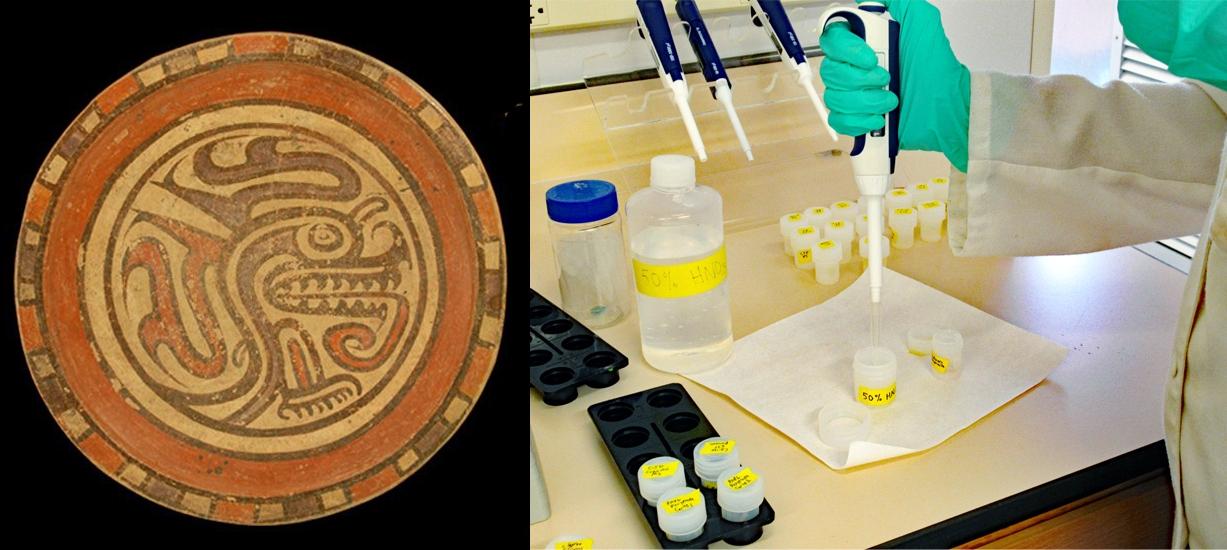
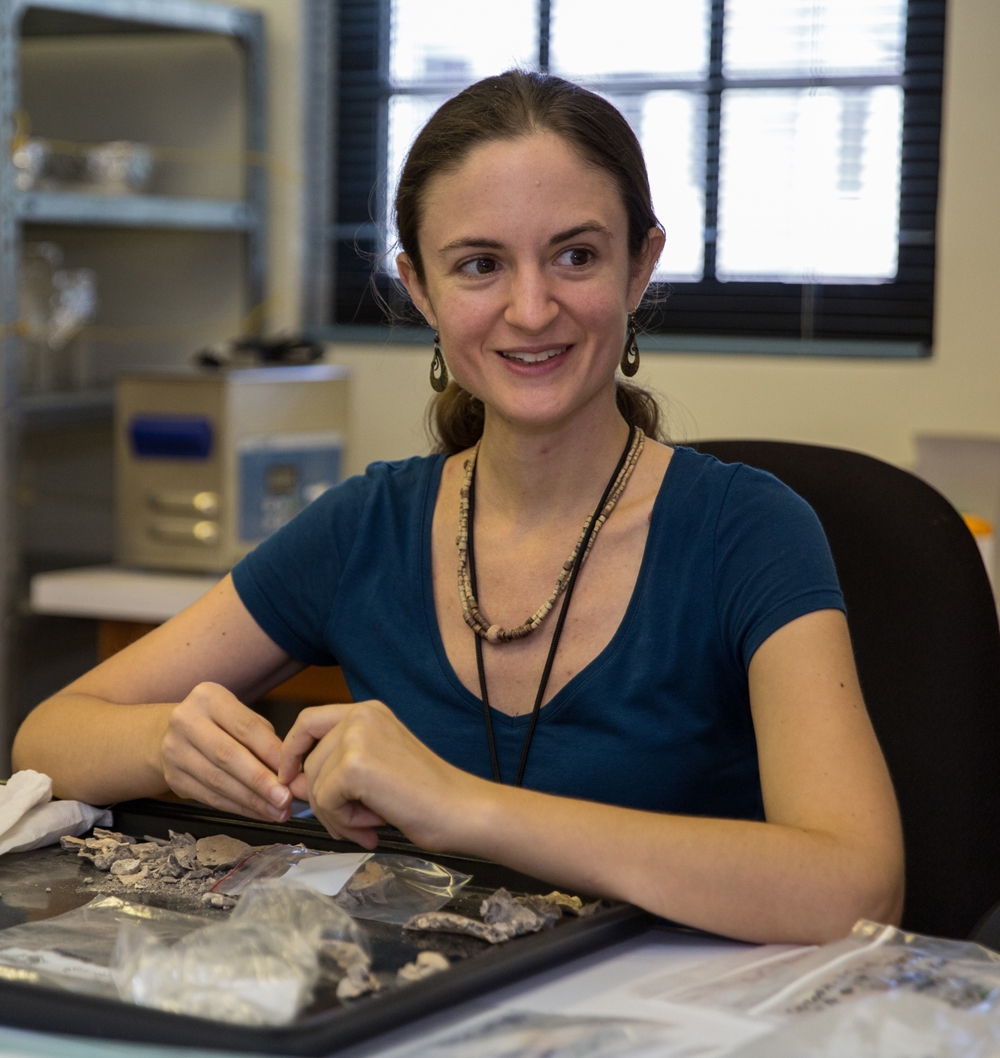 Ashley Sharpe is a staff scientist and archaeologist at the Smithsonian Tropical Research Institute in Panama, where she has worked since 2017. Her research examines human and environmental (particularly animal) interactions in the past, including how humans adapted to different environments over time, and what effects they had on the landscape. She has worked as an archaeologist and faunal analyst on projects throughout Central America, including Ceibal, San Bartolo-Xultun, and Kaminaljuyu in Guatemala, Aguada Fénix in Mexico, Selin Farm in Honduras, and most recently projects in Panama. She obtained a Ph.D. in Anthropology from the University of Florida in 2016.
Ashley Sharpe is a staff scientist and archaeologist at the Smithsonian Tropical Research Institute in Panama, where she has worked since 2017. Her research examines human and environmental (particularly animal) interactions in the past, including how humans adapted to different environments over time, and what effects they had on the landscape. She has worked as an archaeologist and faunal analyst on projects throughout Central America, including Ceibal, San Bartolo-Xultun, and Kaminaljuyu in Guatemala, Aguada Fénix in Mexico, Selin Farm in Honduras, and most recently projects in Panama. She obtained a Ph.D. in Anthropology from the University of Florida in 2016.
Contact Michelle Jacobson
Email mjacobson@ioa.ucla.edu
Phone
Dr. Alison Carter
Assistant Professor, Department of Anthropology, University of Oregon
Wednesday March 3rd, 12:00pm
Register for this Cotsen Virtual Pizza Talk here! You will receive instructions on viewing the talk after registering.
Contact Sumiji Takahashi
Email sutakahashi@ioa.ucla.edu
Phone
- ‹ previous
- 7 of 22
- next ›



